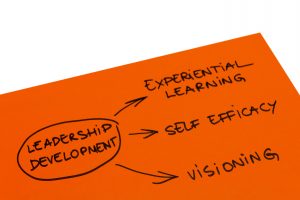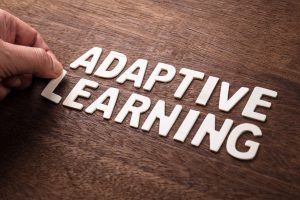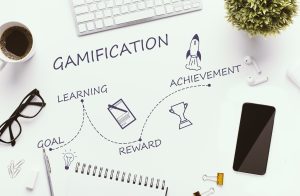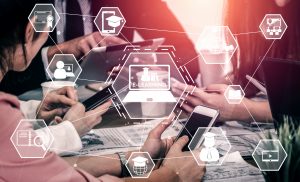Strategies for Implementing Remote Employee Training
- Jennifer Adams
- January 5, 2023
- 2:19 pm
Many businesses are turning to remote employee training as a method to upskill their staff as the global workforce becomes more dispersed. This not only gives you location flexibility, but it can also be a reasonably priced way to teach big groups of workers. Implementing remote employee training, however, can be difficult because it calls for a different strategy than in-person training.
This article provides best practices for adopting remote employee training programs. You find case studies of organizations that have done so effectively. Read more about the most efficient ways to deliver remote employee training. Lastly the most typical problems to watch out for when developing remote training programs. We also published an article about “Remote Training Tools to engage your remote employees”.
Best practice remote employee training strategies
Remote employee training can be an effective way to upskill and retain talent, but it’s important to approach it in the right way. Starting by using a variety of training methods for example self-paced online courses or live training sessions which are delivered remotely. Next it is important to provide ongoing support, and measuring the effectiveness of the training. By doing so companies can ensure that their remote employees have the skills and knowledge they need to succeed.
Outline your training goals
Before you begin, it is critical that you understand your training objectives. This will assist you in determining which training approaches and materials will be most effective. For example, if you want to increase technical skills, you may use video courses or webinars. If, on the other hand, you want to strengthen soft skills like communication or leadership, you should consider using interactive online classes or virtual simulations.
Use a variety of employee training methods
A key method for adopting remote employee training is to provide training in a variety of formats. Using a range of tactics can assist in keeping employees interested while also making training accessible to those with different learning styles. To make the experience more dynamic and entertaining, self-paced online courses, virtual instructor-led training, or gamified training approaches may be used. Employees can learn in a variety of methods and choose the approach that best suits their needs, helping them to retain more information.
Give constant encouragement and support.
Another key method is to provide constant assistance and reinforcement. Follow-up meetings, coaching, or access to resources such as online forums or knowledge bases can all be included. You can assist employees in applying what they have learned and addressing any issues they may face in their day-to-day job by offering ongoing support.
Measure the efficacy of your training programs
It is critical to monitor the effectiveness of remote employee training programs in addition to deploying them. This might assist you in determining whether the training is achieving its goals and identifying areas for improvement. Using pre- and post-training assessments to measure changes in knowledge, abilities, and attitudes is one method. You can also solicit feedback from employees to better understand their experiences and identify any difficulties they may have encountered.
Effective methods of delivering remote employee training
Below you find the most popular methods of delivering remote training to employees. Many companies will offer a mix of these trainings for their remote employees. By doing so they intent to provide a more holistic training approach.
Online training programs: A lot of companies provide online training programs that staff members can finish at their own leisure. For individuals who want to learn alone, this could be a fantastic option. For example HubSpot Academy offers a wide range of online courses on topics including marketing, sales, and customer service. You can also find free resources in our Knowledge Hub.
Video conferencing systems are used to deliver training sessions with an instructor leading them virtually. For workers who want a more participatory learning environment, this can be an excellent alternative. Salesforce, for instance, provides online instructor-led training for its sales and marketing tools.
On-demand video training: This involves providing employees with access to a library of pre-recorded video training sessions that they can watch at their own convenience. For example, GrooveHQ offers on-demand video training on customer service best practices. At Bookboon Learning we recently launched Live Virtual Classrooms, you can view a free session here.
Online one-on-one coaching: some businesses provide their remote employees with one-on-one coaching as a beneficial resource to help them develop their skills and capacities. These coaching sessions usually take the shape of a one-on-one conversation between a worker and a manager or mentor, during which the worker might get specialized advice and training. As it enables individuals to receive targeted support and growth opportunities without having to be physically present in an office, this kind of coaching is very beneficial for remote workers.
Group learning sessions: Companies can also use video conferencing tools to organize group learning sessions. During these sessions employees can learn from each other and collaborate on projects. For example, Automatic, the company behind WordPress.com, uses group learning sessions to train its largely remote workforce.
5 Common challenges when implementing remote training programs
Remote training brings with it several unique challenges that can make or break the success of your training programs. These challenges need to be actively addressed in the design, implementation, and follow-up stages of your remote employee training programs.
1. Promoting participation
Making sure that employees are interested in and motivated to learn presents a difficulty for remote training. If the training is not interactive or if workers are not given the chance to put what they have learned into practice, this may be particularly challenging. For instance, a business might find it difficult to keep workers interested in a series of non-interactive online training programs.
2. Providing suitable assistance
Providing sufficient staff support during the training process presents another difficulty. This might mean responding to inquiries, providing feedback, and suggesting other resources. For instance, if a company doesn’t have a specialized training team or is unable to react quickly to employee complaints, it may be difficult to offer the assistance that remote workers expect.
3. Time management and planning
The coordination of schedules and time zones may be necessary for remote training, which can take additional time for both employees and trainers. A business may find it difficult to manage time and schedule, for instance, if its workforce is varied and dispersed across several time zones.
4.Ensuring consistency
It can be difficult to guarantee that each employee receives the same training and understands the subject matter. This can be especially the case in a remote location because workers do not have the same access to resources or support. For instance, a company may find it challenging to ensure consistency in its remote training because it lacks a centralized process for tracking progress and providing feedback.
5. Assessing and measuring effectiveness
Finally, evaluating and measuring the performance of remote training programs can be difficult. For example determining how well employees have learnt the content and how well they can apply it in their work. This is not possible if an organization lacks a mechanism to track employee development or a system for gathering feedback.
Examples of successful employee remote training programs
To conclude, here are a couple of examples of companies which have successfully implemented remote training programs for their employees.
Zendesk
Zendesk, a customer care software firm, trains its staff using a combination of online classes, webinars, and one-on-one coaching, regardless of their location. Rachel Orston, Zendesk’s Director of Learning and Development, stated that “Our training aims to educate our staff with the skills and knowledge they need to excel at their professions and deliver the best service possible to our customers. We can reach a larger audience and ensure that all of our employees have equal access to possibilities by providing training remotely.”
Buffer
Buffer, a social media management tool, which has an entirely remote workforce scattered across 11 nations. They have introduced a number of remote training initiatives, including online courses, webinars, and virtual workshops. This in order to guarantee that all employees have access to training and development opportunities. Carolyn Kopprasch, Buffer’s Chief Operating Officer, stated that “One advantage of having a completely remote team is that we can provide employees with training and development opportunities regardless of their location. This is especially true for employees who may not have the same resources as those in larger cities.”
Remote employee training, in general, can be an efficient strategy to upskill and retain talent in a scattered workforce. You can guarantee that your remote employees have the skills and knowledge they need to succeed by having a clear grasp of your training objectives, using a variety of training methods, and providing continuing support and reinforcement. As the trend toward remote work increases, businesses must examine options for implementing remote employee training to support the development and success of their distributed workforce.

Download free L&D content

Free eBook: Blended Learning
Blended Learning. Solved in one solution. Get the right blend of modern and traditional learning. Why Blended Learning is important? What works for one employee
Virtual Onboarding
Want to master virtual onboarding? Download this free book now! Learn the basics, benefits, timing, key players and strategies for success. Don’t miss out!

Free Learning & Development content
More about Employee Training

Adaptive Learning Systems: Personalized Training at Scale
In the fast-paced realm of corporate Learning & Development, it’s imperative to keep abreast of emerging strategies that can reshape the way we train employees. Among the most significant innovations in the field is the concept of “Adaptive Learning Systems.” These systems are not just changing the game; they’re altering the rules, allowing Learning & Development professionals to deliver highly personalized training for employees while setting new standards for adaptive e-learning in organizations.

Mindful Learning in Corporate L&D: Fostering Well-being
In today’s fast-paced corporate world, Learning and Development (L&D) professionals face a unique challenge. They must equip employees with new skills and knowledge while ensuring their well-being in a demanding work environment. Mindful Learning offers an innovative solution to this challenge. In this article, we’ll explore the concept of Mindful Learning and how it fosters well-being in the corporate L&D space. We’ll also delve into Mindful Training Techniques that can be applied to create a more productive, balanced, and engaged workforce.

Unlocking Well-Being: An Introduction to Holistic Time Management
In the fast-paced world of corporate learning & development, time is both a precious resource and a common challenge. Learning & Development (L&D) professionals often find themselves balancing myriad tasks, from designing training programs to fostering employee growth. However, amid this hustle, the concept of holistic time management emerges as a beacon of well-being and productivity. This blog post embarks on a journey to explore holistic time management, uncovering strategies that promote well-being in the workplace. Our goal is to provide L&D professionals with actionable insights and techniques to lead healthier, more fulfilling professional lives.
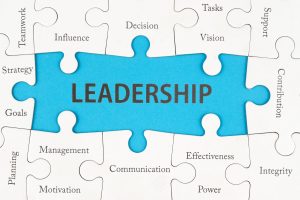
Hybrid Leadership Manual: Leading and Managing Teams in the New Normal
In the realm of corporate learning and development, the winds of change are blowing stronger than ever. Learning & Development (L&D) professionals are at the forefront of these transformative times. The hybrid workplace, born out of the challenges posed by the “new normal,” demands a fresh perspective on leadership and team management. In this comprehensive blog post, we embark on a journey to explore the multifaceted concept of hybrid leadership. Our goal is to provide L&D professionals with not just a theoretical understanding but actionable insights and techniques that empower them to thrive in this evolving work landscape.

Sustainable Corporate Learning: Green Training Practices
In today’s ever-evolving world of Learning and Development (L&D), the call for sustainability has never been more urgent. As Learning & Development Professionals, we have a unique opportunity and responsibility to not only foster professional growth but also to do so in an environmentally conscious way. In this comprehensive article, we’ll explore Sustainable Training Practices, delve into the realm of Eco-Friendly Corporate Learning, and uncover the value of Environmentally Friendly Learning Programs. Let’s embark on a journey towards a greener, more sustainable future for corporate training.

Gamification in Learning and Development: Innovative Training Games
In the fast-evolving realm of Learning and Development (L&D), staying at the forefront is critical. As learning professionals, we constantly seek innovative ways to captivate, motivate, and empower our learners. A dynamic trend that has taken L&D by storm is gamification. In this comprehensive article, we’ll take a deep dive into the world of Gamification in Learning and Development, exploring the fascinating realm of Innovative Training Games and the transformative potential of Gamified Training Solutions.

Neuroscience in Learning: Maximizing Training Impact
In the fast-paced world of corporate Learning & Development, staying at the cutting edge is essential. One powerful tool that is transforming the way we approach training is the application of neuroscience. Learning & Development professionals are beginning to harness the insights from brain science to create brain-friendly training methods that significantly boost learning outcomes. In this comprehensive article, we’ll explore the exciting intersection of neuroscience and corporate training, uncovering how understanding the brain can revolutionize your approach to employee development.

Mastering Virtual Collaboration: A Guide to Running Effective Online Meetings
The year 2020 brought about a profound transformation in the way we work and communicate. The global pandemic forced organizations and individuals to adapt rapidly to a new reality, one where remote work and virtual collaboration became the norm. This paradigm shift necessitated a reevaluation of how we conduct meetings and engage in teamwork. For Learning and Development professionals mastering virtual collaboration emerged as a critical skill for fostering productivity and maintaining business continuity.

Mental Health Training: Fostering Employee Well-being
In today’s rapidly evolving corporate landscape, the significance of employee well-being, particularly mental health, has taken center stage. Learning & Development professionals are increasingly recognizing the critical role they play in fostering a mentally healthy workplace through training. In this comprehensive article, we will delve deeper into the importance of mental health training for employees, explore how Learning & Development can contribute to well-being in the workplace, and discuss the role of well-being training in creating a healthier, more productive workforce.

Mastering Workplace Wellness: A Manager’s Guide to a Healthier, Happier Work Environment
In the fast-paced world of corporate learning and development, one aspect that is gaining increasing recognition is the vital role of workplace wellness. Learning and development professionals are realizing that a healthier and happier work environment directly contributes to employee productivity, engagement, and overall success. In this article, we will delve into the essential components of mastering workplace wellness, offering valuable insights and strategies that Learning & Development professionals can implement to promote employee well-being. Let’s explore workplace wellness strategies, employee well-being programs, creating a healthier work environment, initiating employee wellness initiatives, and managing workplace stress effectively.

Effective Strategies for Remote Workforce Training
In today’s rapidly evolving corporate landscape, remote work has become a norm, and with it, the need for effective remote workforce training has surged. Learning & Development professionals are at the forefront of this transformation, seeking innovative ways to ensure that distributed teams receive the training they need to excel in their roles. In this comprehensive article, we will delve deeper into the best practices and virtual employee training techniques that can help you create engaging online training programs for your remote workforce.

Leveraging Neuroscience and Cognitive Techniques for Effective Training
In today’s rapidly evolving corporate landscape, Learning & Development (L&D) professionals face an ongoing challenge: how to enhance training programs and elevate learning outcomes in a way that keeps pace with change. Fortunately, there is a cutting-edge approach gaining prominence in the field: the integration of cognitive learning techniques with the principles of neuroscience. This comprehensive article will take an in-depth look into the captivating world of neuroscience in learning and explore how it can be leveraged to create more effective training methods. We’ll provide actionable insights, strategies, and unique perspectives to equip you for success in the dynamic world of L&D.

Mobile Learning: Strategies and Benefits for a Mobile-First Workforce
In today’s dynamic corporate landscape, where remote work and flexibility are the new norm, Learning & Development professionals face the exciting challenge of adapting training methods to meet the needs of a mobile-first workforce. Mobile learning, or mLearning, has emerged as a transformative approach to corporate training, offering numerous advantages for both organizations and employees.

Building a Learning Culture in Large Companies: A Blueprint for Success
In the dynamic realm of corporate Learning & Development (L&D), the establishment of a robust learning culture is essential for achieving sustained growth and adaptability. In this comprehensive article, we will delve into the profound significance of creating a learning culture in large organizations, with a specific focus on strategies that Learning & Development professionals can employ. We’ll explore the multifaceted aspects of this endeavor, offering practical insights and actionable techniques to cultivate a learning-centric corporate culture that not only fosters professional development but also nurtures employee growth and engagement.

The Impact of Remote Work on Corporate Learning Strategies
In the ever-evolving field of corporate Learning & Development (L&D), the surge in remote work has brought about profound changes, shaping corporate learning strategies. As L&D professionals navigate this transformative era, it’s essential to recognize how remote work influences corporate learning and explore innovative solutions, including virtual learning for remote teams and effective remote employee training solutions.

AI and Data Analytics for Personalized Learning in Corporate Training
In today’s rapidly evolving corporate landscape, Learning & Development (L&D) professionals are faced with the multifaceted challenge of delivering training that meets the diverse needs of employees across various roles and skill levels. Traditional one-size-fits-all learning models are increasingly inadequate in catering to the unique learning requirements of modern workforces. The convergence of artificial intelligence (AI) and data analytics has ushered in a new era, offering unprecedented opportunities to transform conventional learning approaches into dynamic and personalized learning journeys.
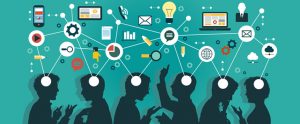
Maximizing Team Flow: Performance and Collaboration in Corporate Learning & Development
In the fast-paced and ever-evolving landscape of corporate Learning & Development (L&D), the quest to unlock team flow has become an essential goal for organizations seeking to maximize performance and collaboration.

Personalized Learning Journeys: Tailoring L&D to Individuals
In the fast-paced world of corporate learning and development (L&D), a one-size-fits-all approach is no longer sufficient. To meet the diverse needs of learners and maximize their potential, personalized learning journeys have emerged as a powerful solution. This article explores the significance of personalized and adaptive learning, delves into the concept of learning journeys, and provides actionable tips for implementing personalized L&D programs

Empowering Learning & Development Professionals in a Rapidly Evolving Landscape
In today’s rapidly evolving business landscape, learning and development (L&D) professionals face unique challenges in empowering themselves to excel in their roles. As the learning landscape undergoes significant transformations, the need for skills development among L&D professionals becomes paramount. This blog article aims to shed light on the challenges in the L&D industry, explore the rapidly evolving learning landscape, provide actionable tips to empower L&D professionals for success, and delve into the critical role of continuous learning in their journey.

Exploring the Vitality of Training and Development in the Modern Workplace
In today’s fast-paced and ever-changing business landscape, the significance of training and development in organizations has reached new heights. Learning & Development Professionals are at the forefront of empowering employees with the skills they need to adapt to the changing work environment successfully. This blog article delves into the transformative power of learning in the modern workplace, offering unique insights and actionable tips for professionals to excel in their roles and personal development.
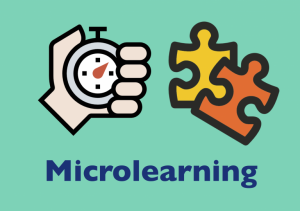
Microlearning in the Corporate World: Bite-Sized Training for Maximum Impact
In today’s fast-paced corporate environment, Learning and Development (L&D) professionals face the challenge of ensuring effective training programs that engage employees and yield maximum results. One innovative solution that has gained significant traction is microlearning.

Training Industry: Unveiling Historical Transformations and Future Innovations
In the fast-paced world of learning and development, the training industry has undergone significant transformations over the years. From traditional classroom settings to modern digital platforms, the evolution of training methods has revolutionized the way we acquire knowledge and skills. In this article, we will delve into the historical changes in learning and development, explore the future innovations in training, and provide unique insights, actionable tips, and techniques for learning and development professionals.

Embracing Lifelong Learning for Personal Growth and Career Advancement
In today’s fast-paced world, where professional landscapes are constantly evolving, embracing lifelong learning has become imperative for learning and development professionals. Lifelong learning is the key to personal growth, career advancement, and staying ahead in the competitive job market. In this article, we will delve into the strategies and benefits of lifelong learning while providing unique insights, actionable tips, and techniques that will empower learning and development professionals in their pursuit of success.
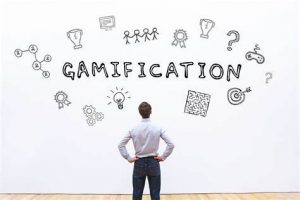
Engaging Employees and Driving Performance through Gamification in Learning
In the fast-paced corporate world, engaging employees and driving performance are top priorities for Learning & Development professionals. One innovative approach that has gained significant attention is gamification in learning.

Effective Succession Planning and Employee Retention Strategies
In the 21st century, the role of Human Resources Management has evolved significantly, requiring professionals to specialize in knowledge and talent management. To thrive in the knowledge economy, organizations must prioritize effective succession planning and employee retention strategies. This blog article aims to provide learning and development professionals in Western Europe and North America with unique insights and actionable tips on optimizing talent management, ensuring a seamless succession planning process, and implementing employee retention strategies. By focusing on best practices and leveraging talent management solutions, organizations can stay ahead in the dynamic world of HRM.

Designing Learning Programs for a Multigenerational Workforce
In today’s corporate landscape, organizations face the unique challenge of managing a multigenerational workforce. Learning & Development professionals must adapt their strategies to bridge the generational gap and design effective training programs. This article explores key insights and actionable techniques to successfully address this challenge, ensuring optimal learning outcomes for different generations. Let’s delve into the realm of multigenerational workforce training, bridging the generational gap in learning, and designing learning programs for different generations.

Transforming Employee Onboarding: Innovative Approaches for Success
Welcome to the era of modern employee onboarding, where organizations are reimagining traditional practices to create a seamless and engaging experience for new hires. In this comprehensive blog article, we will delve into employee onboarding best practices, innovative onboarding strategies, effective employee orientation techniques, and onboarding process improvement. Whether you’re a seasoned Learning & Development professional or just starting out in your career, this article will provide you with valuable insights, actionable tips, and fresh perspectives to enhance your employee onboarding programs.
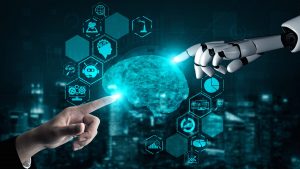
The Role of Artificial Intelligence in L&D: Revolutionizing Training Delivery
In today’s rapidly evolving business landscape, Learning and Development (L&D) professionals play a critical role in ensuring that employees have the necessary skills and knowledge to thrive. With the emergence of Artificial Intelligence (AI), training delivery has undergone a significant transformation

Training Remote Employees: Key Considerations and Solutions
With remote work on the rise post-COVID, training remote employees has become a crucial aspect for organizations. However, this new mode of training comes with its own set of challenges, from accommodating different learning styles and pace to balancing work and training responsibilities, adjusting to a new learning environment, and ensuring access to adequate and relevant learning content. But, with the right approach and tools, L&D managers can effectively train their remote workforce.

5 Remote Training Tools to Engage Your Remote Employees
As remote work becomes increasingly prevalent, it’s crucial for companies to find effective ways to train their employees remotely. In this article, we will present five remote training tools. We will discuss their potential benefits and drawbacks. Each tool offers unique advantages, and the best one for a particular situation will depend on the needs of the trainees.

Strategies for Implementing Remote Employee Training
As the global workforce becomes increasingly distributed, many companies are turning to remote employee training as a way to upskill their employees.

How to Create an Effective Employee Training Program
Creating an effective employee training program is essential for the success of any organization. Not only does it help new hires quickly become productive members of the team, but it also helps existing employees stay up to date on the latest industry trends and techniques. However, developing a training program that works can be a challenging task. Here are important tips for creating an effective employee training program:











